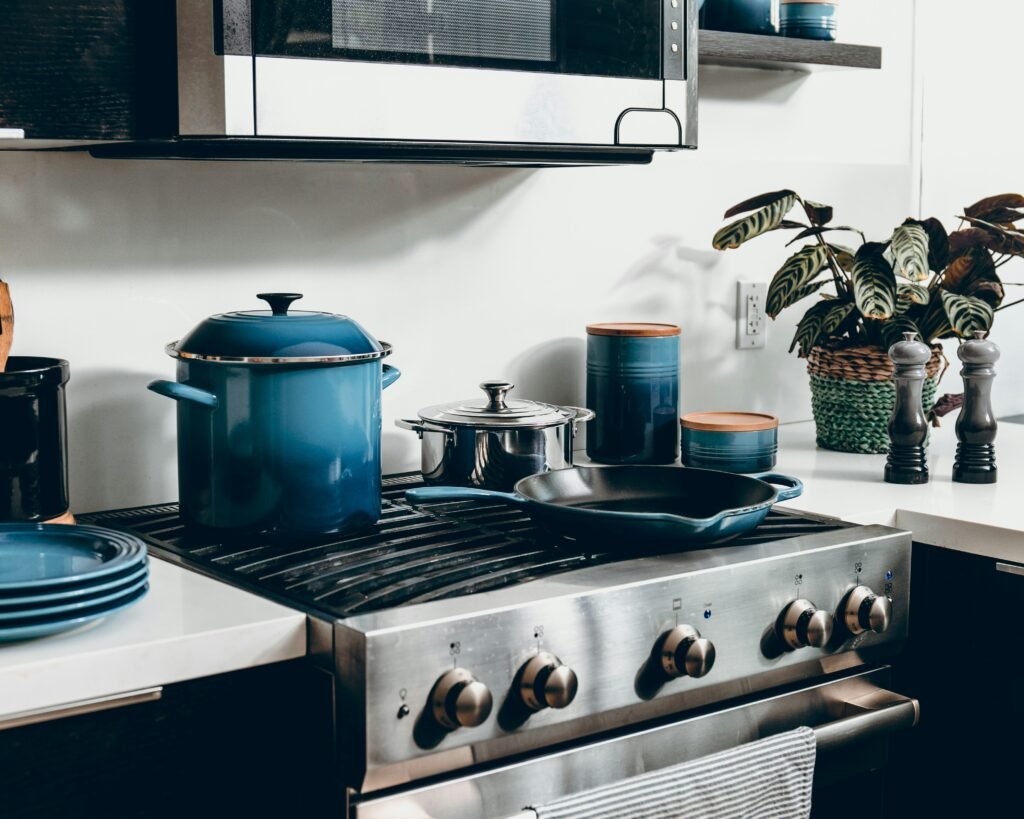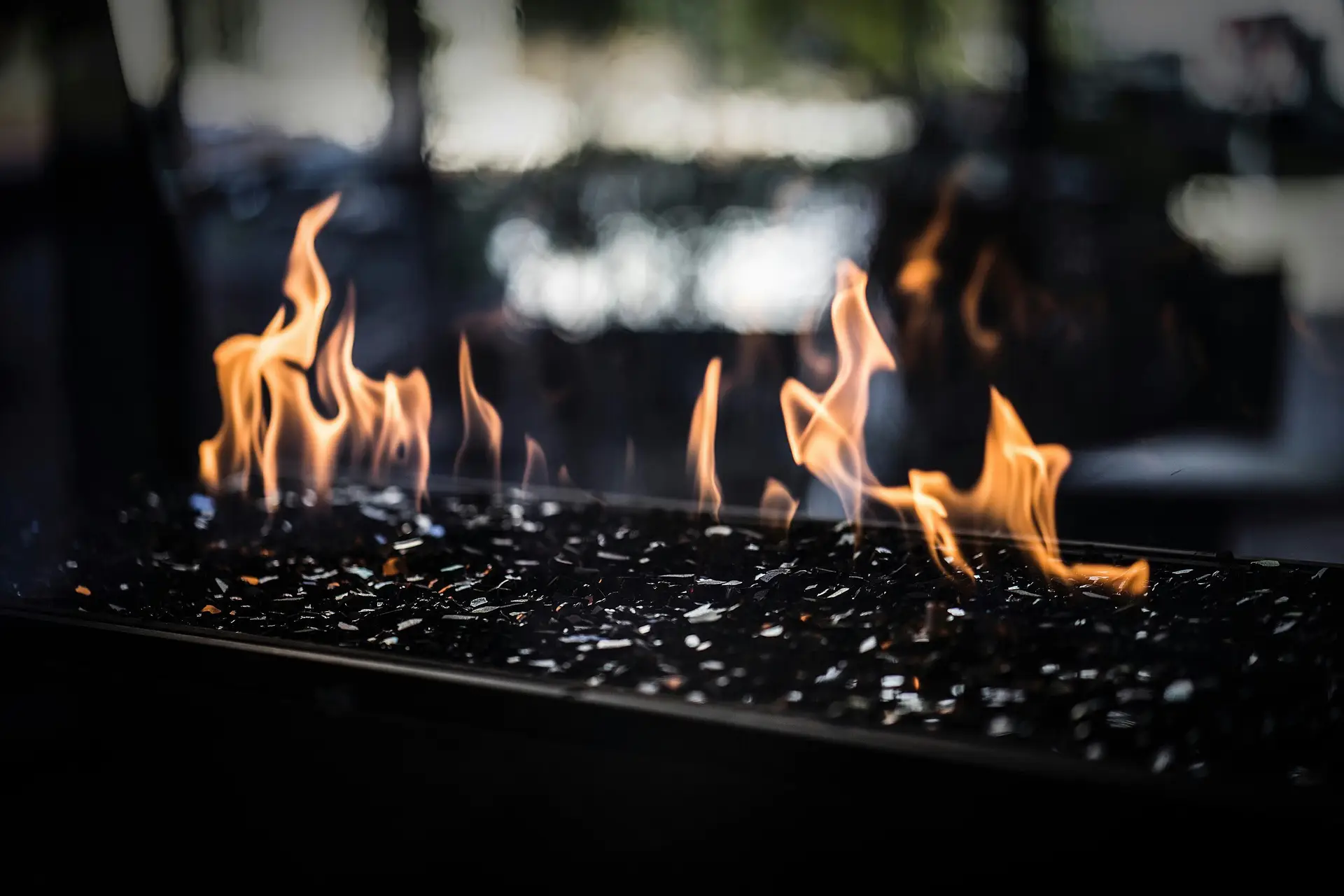4 Types of Stoves And How to Choose One for Your Home
The 4 essential varieties of stoves are gas, electric, induction, and wooden-burning. Choosing the proper one depends in your cooking choices, power efficiency desires, and kitchen layout.
Selecting the suitable stove for your private home can seem daunting with diverse options to be had. Each kind gives wonderful advantages that cater to exceptional cooking styles and kitchen setups. Gas stoves offer particular heat control and are desired by way of many cooking lovers.
Electric stoves, acknowledged for their even cooking surfaces, are a commonplace choice for simplicity and lower set up fees. Induction stoves boast speedy heating and electricity efficiency, making them famous in current, eco-conscious houses. Lastly, wooden-burning stoves add a country allure and can double as a warmth source. Your decision ought to align with your culinary needs, environmental issues, and the prevailing infrastructure of your home. Keep those factors in mind to make sure your new stove is a really perfect suit to your way of life.
Introduction To Home Cooking Essentials
Kitchens need a dependable range. It’s key for everyday food. An appropriate range makes cooking less complicated. It’s an investment in your own home’s cost and your circle of relatives’ health.
The Role Of A Stove In Your Kitchen
The stove is the coronary heart of the kitchen. It’s where you boil, fry, and simmer. Good stoves help with green meal prep. They are a should for domestic cooks.
- Boiling: Cook pasta and vegetables.
- Frying: Make crispy bacon and eggs.
- Simmering: Create savory stews and sauces.
Factors Influencing Stove Selection
Choosing a stove needs thought. Consider these key factors:
| Kitchen Size | Energy Source | Stove Type | Budget |
|---|---|---|---|
| Match stove to kitchen space. | Gas, electric, or induction? | Range or separate oven and cooktop? | What’s your price range? |
Decide on features you need. Think about your cooking style. Look at stove durability and maintenance. Pick a stove that fits your lifestyle.

Electric Coil Stoves
Today, let’s dive into the world of Electric Coil Stoves. These stoves are popular in many kitchens. They work by heating coils to cook food. Now, let’s explore their pros, cons, and how to keep them in top shape.
Pros And Cons
Electric Coil Stoves have both good and not-so-good sides. Here’s a quick look:
- Pros:
- Cost-effective
- Easy to replace coils
- Suitable for all cookware
- Cons:
- Slower heat adjustment
- Higher cleaning effort
Best Practices For Maintenance
Keeping your Electric Coil Stove clean and functional is important. Follow these tips:
- Regularly clean spills to prevent hard stains.
- Remove coils and clean underneath after they cool down.
- Check coils for damage and replace if needed.
With proper care, your Electric Coil Stove can last longer and work better.
Gas Stoves
Ready to bring the warmth for your kitchen? Gas stoves are popular for their quick heating and particular temperature control. Whether a domestic chef or a quick meal maker, knowledge the blessings and protection of gasoline cooking is key. Let’s discover why a gasoline stove might be an appropriate fit in your culinary area.
Benefits Of Cooking With Gas
- Instant Heat: Turn the knob, and the flame is there.
- Temperature Control: Precise flame adjustment allows for best cooking.
- Cost-Effective: Natural gas commonly fees much less than energy.
- Cookware Compatibility: Works well with most pots and pans.
- Less Heat Emission: Kitchens live cooler as gasoline heat dissipates fast.
Safety Tips And Care
- Leak Checks: Regularly investigate for gasoline leaks to make sure safety.
- Proper Ventilation: Always use with a selection hood or open window.
- Clean Regularly: Keep the range pinnacle loose from grease and spills.
- Flame Supervision: Never leave a lit range unattended.
- Child Safety: Use knob covers or do away with knobs whilst no longer in use.
Induction Cooktops
Induction cooktops are cutting-edge kitchen marvels. They provide precision cooking with a sleek layout. Many homeowners choose those for their performance and protection functions.
Understanding Induction Technology
Induction cooktops use electromagnetic fields to heat pots and pans immediately. This approach skips heating the stove top itself. Instead, the strength goes instantly into the cookware.
- Fast heating: Cooks food quickly.
- Energy-efficient: Uses less electricity.
- Less heat waste: Keeps kitchens cooler.
Why Choose An Induction Stove?
Home chefs love the control and speed of induction cooktops. Here are reasons to choose one:
| Feature | Benefit |
|---|---|
| Precision Control | Adjust temperatures instantly. |
| Safety | Stays cool to the touch. |
| Cleanliness | Easy to wipe clean. |
| Energy Efficiency | Saves on power bills. |
With these benefits, induction cooktops stand out in modern kitchens. They suit busy lifestyles and cater to safety-conscious cooks. Plus, they add a touch of elegance to any home.

Glass-top Electric Stoves
Glass-Top Electric Stoves bring sleek design to modern kitchens. They blend style with functionality. Their smooth surface shines in any home. Below, explore the benefits and care tips of these stoves.
Aesthetic And Functional Appeal
- Seamless look enhances kitchen decor.
- Heats up quickly, making cooking faster.
- Even heat distribution for consistent cooking.
- Digital controls offer precise temperature management.
Cleaning And Upkeep
Caring for glass-top stoves is simple. Use the right techniques to keep them looking new.
- Wipe spills promptly to prevent stains.
- Use a soft cloth and special cleaner for glass surfaces.
- Avoid abrasive sponges that can scratch the top.
- Clean regularly to maintain shine and performance.
Key Features To Consider
Before choosing a stove, certain features are crucial. They ensure cooking ease and cost savings. Let’s explore these features in detail.
Heat Control And Distribution
Good stoves manage heat well. This means your food cooks evenly. Here are key points:
- Responsive knobs: Quick temperature changes are a must.
- Even heat: Look for models that distribute heat uniformly.
- Low to high range: Your stove should simmer and sear well.
Energy Efficiency And Cost
Efficient stoves save money and energy. When comparing stoves, consider:
- Initial price: Higher cost can mean better efficiency.
- Long-term savings: An efficient stove lowers bills over time.
- Energy source: Gas, electric, or induction affects cost and efficiency.
| Type | Efficiency | Cost |
|---|---|---|
| Gas | Less efficient | Lower upfront |
| Electric | More efficient | Moderate upfront |
| Induction | Most efficient | Higher upfront |
Stove Accessories And Add-ons
Choosing the right stove for your home is a big decision. Yet, the journey doesn’t stop there. Stove accessories and add-ons play a crucial role. They make cooking easier and more fun. Let’s explore must-have accessories and how to enhance your cooking experience.
Must-have Accessories
Every stove owner should consider these essential accessories:
- Griddles – Perfect for pancakes and bacon.
- Steamer Baskets – Ideal for healthy vegetable cooking.
- Heat Diffusers – Ensure even cooking on all stove types.
- Splatter Guards – Keep your kitchen clean while frying.
Enhancing Your Cooking Experience
To take your cooking to the next level, consider these add-ons:
- Smart Temperature Probes – Never overcook your meat again.
- Magnetic Timers – Keep track of cooking times easily.
- Cast Iron Skillets – For that perfect sear on steaks.
- High-Quality Utensil Sets – Durable tools make cooking a breeze.
These accessories and add-ons not only boost your cooking game but also ensure your meals come out perfectly every time.
Making The Decision
Making the Decision on the right stove can seem daunting. Your choice affects your cooking and your budget. Let’s explore how to pick the perfect one.
Assessing Your Cooking Style
Think about how you cook. Do you enjoy quick meals or slow-cooked dishes? Different stoves suit different styles. Let’s break it down:
- Gas stoves offer fast heating and precise control.
- Electric stoves provide even heat and are easy to clean.
- Induction stoves heat quickly and offer temperature precision.
- Dual-fuel stoves combine gas and electric features.
Balancing Budget And Preferences
Your budget is key. But don’t sacrifice must-have features. Consider:
| Stove Type | Initial Cost | Long-term Savings |
|---|---|---|
| Gas | Higher | Lower fuel cost |
| Electric | Lower | Higher electricity bills |
| Induction | Higher | Energy efficiency savings |
| Dual-fuel | Highest | Best of both worlds |
Match your budget with a stove that meets your cooking style. Find the balance for a happy kitchen.
Installation And Setup
Choosing the right stove involves more than just picking a model. Installation and setup are key steps. This section guides you through these processes.
Professional Installation Vs. Diy
Deciding between professional installation and doing it yourself (DIY) is crucial.
| Option | Pros | Cons |
|---|---|---|
| Professional Installation |
|
|
| DIY |
|
|
Initial Setup Tips
Right after installation, these tips ensure a smooth start.
- Read the manual. Know your stove.
- Check connections. Ensure everything is tight and right.
- Test run. Do a small test before full use.
- Plan a maintenance schedule. Keep it running well.
Frequently Asked Questions
How To Choose Stove For Home?
Consider your kitchen size and layout to select the right stove size. Prioritize fuel type, choosing between gas, electric, or induction based on cooking preference. Evaluate energy efficiency ratings to ensure cost-effective operation. Look for stoves with safety features, especially if you have children.
Read reviews and compare brands for reliability and after-sales service.
What Is The Difference Between The Different Types Of Stoves?
Different stove types vary in fuel source and heat distribution. Electric stoves offer steady heat, gas stoves provide quick temperature control, and induction stoves heat with magnetic fields for efficiency. Wood stoves are for ambiance and heating, using logs for fuel.
What Are The 4 Types Of Cooktops?
The four types of cooktops are gas, electric, induction, and ceramic. Each offers unique cooking benefits and efficiency levels.
Conclusion
Selecting the right stove is pivotal for any kitchen. Balance your cooking needs with energy efficiency and budget. Whether it’s a classic gas range, a modern induction cooktop, a durable electric stove, or a versatile dual-fuel option, your choice shapes your culinary experience.
Make an informed decision and enjoy the heart of your home to its fullest.







